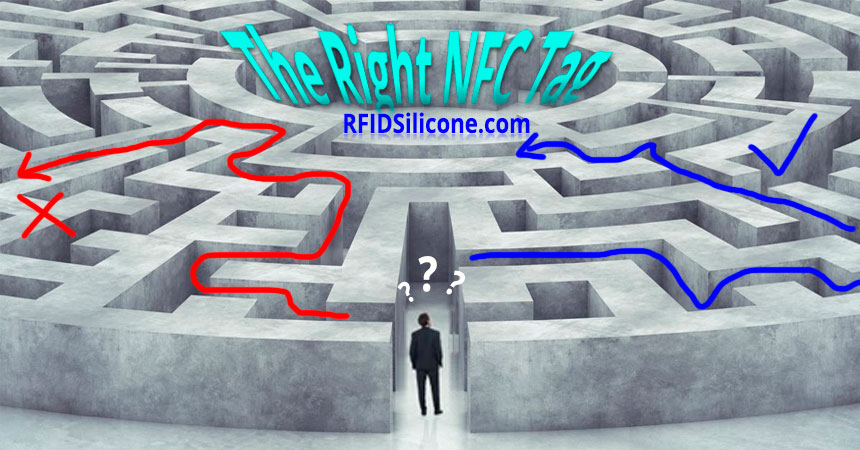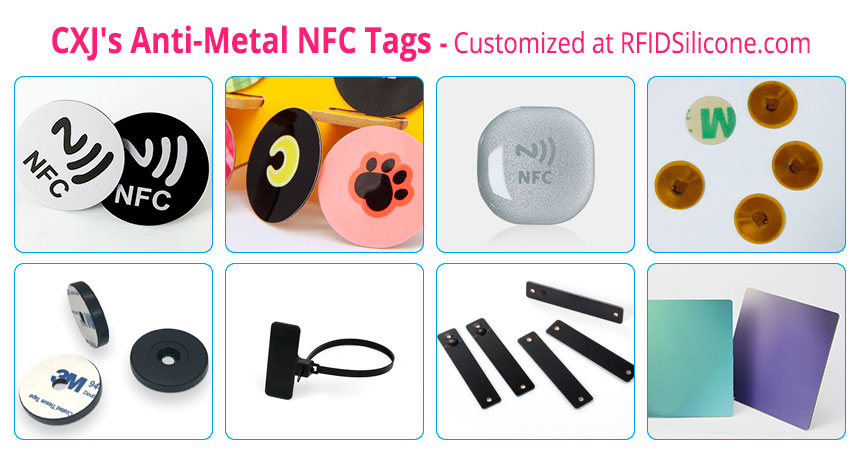Regarding the topic of how to choose NFC tags, the last industry news has introduced the characteristics and applications of NFC NTAG213, NTAG215 and NTAG216 chips in detail. Which of the following factors should also be considered when you are choosing the right NFC tag for your project? Let's learn together!

Many of our customers often experience problems with NFC tags attached to metal surfaces that cannot be read. That's why RFIDSilicone's original intention to develop anti-metal NFC tags is to solve customers' pain points.
CXJ (RFIDSilicone) Anti-metal NFC tags can be used to tag and track metal assets. Typically, this technology is required in the manufacturing and logistics industries. Since most machines have metal surfaces, you'll need an anti-metal tag to keep track of them. When using, don't hide the anti-metal NFC tag behind the metal sheet, let the front side be on the side without metal.

Size is only important in NFC tags when identifying the read range. Larger NFC tags have a larger read range. If your application requires space, we recommend using an NFC tag with a large antenna. This could include placing NFC tags behind panels or glass. Anti-metal NFC tags have less range in terms of read distance. Even if you get a larger size, it usually has a short distance.
NFC chips can operate at temperatures from -20°C to +70°C. However, even though they are waterproof, they require additional protection against foreign substances. If your application has harsh environments such as washing or blasting finance, you need to design NFC tags for specific functions. Clarify with your service provider if they can offer additional protection.
Finally, you need to decide how to use your NFC tag. There are four main uses for NFC tags. Contactless payments, Ticketing, Identification and access control, and Product status and maintenance.
NFC tags are most often used in the form of tags. Some labels come with glue so they are resistant to harsh weather conditions.
For extreme environments, you can use perforated NFC tags. These tabs have holes so you can pin or screw them to the surface.
Using cables is the best substitute for glue and holes. Cable ties have NFC chips integrated into them, so you can tighten them on their supports.

You can embed NFC tags into special holders such as rings, bracelets, ID cards, etc. This allows you to use these items on a daily basis to automate processes. For example, an NFC ID badge can be used to enter a lounge. It eliminates the need for time-consuming security checks and simplifies entry.
CXJ's Anti-Metal NFC Tags - Customized at RFIDSilicone.com
RFIDSilicone is Your Best RFID & NFC Partner!
16+ years experience in RFID products (RFID wristband, RFID sticker/tag, RFID card etc).
Our own factory passed ISO9001: 2015 & ISO14001:2015. We have SGS, ROHS, REACH, FDA certificates etc.